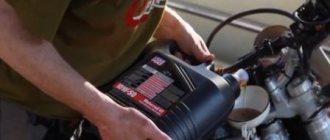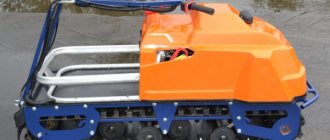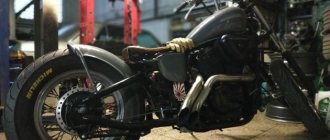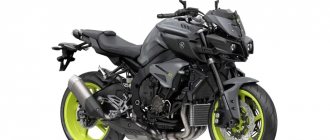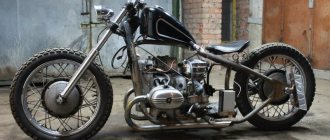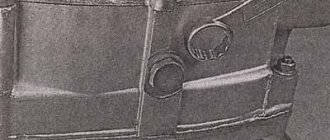I promise to leave personal preferences in this matter “behind the scenes” (especially since they are still not included in today’s list due to the “suitable for beginners” restriction). Let’s talk as objectively as possible: what the “market” is now offering us en masse, and what we can recommend from this for beginners. Let’s divide the “top” into three categories: the first is which cruiser to choose if your budget is modest, or if you’re not sure that a cruiser is 100% the motorcycle for you, the second is a reliable classic for style fans, and the third is “wrap this one up” ( if the budget is not limited).
Features of cruiser motorcycles: what you need to know before buying?
A cruiser is a pontoon cutter. Regardless of whether it is an old-school bagger hung with panniers, a powercruiser capable of accelerating in 2.7 seconds to a hundred from a standstill, or an American dragster show stopper skeletonized like a chopper, its purpose is to move its blessed owner and passenger in space with maximum comfort and pathos.
The same “cruise” style includes motorcycles that are so different in appearance that it will be difficult to convince a person “not in the know” otherwise. However, modern Triumph Rocket 3, Yamaha V Star (250), Victory Cross Country, Harley-Davidson Road King (Classic), the now defunct Ural Voyage, as well as the “icons” Indian Chief and Sport Scout of the 40s These are all cruiser motorcycles. Cruiser with the prefix “retro”, “hi-tech”, “sport” and “power” - there are them for every taste.
Style attributes are deeply embedded design solutions, not at the level of body kit shape, but deeper - in the geometry of the frame, landing, weight distribution, and handling. External differences in more modern or archaic design of parts are very distracting to the eye, but if you look closely, you will clearly see the same classic silhouette (triangle) of the frame in each example.
Cruiser, in its classical sense, is:
- Direct, relaxed seating position: forward footrests, a wide, comfortable steering wheel tilted toward the driver, a thick, wide seat with a pronounced “step” that supports the back.
- “Mattered” duplex (with some exceptions) frame, capacious soft rear suspension, powerful brakes, high-quality wind and mud protection, rake (fork angle) from 30 to 35 degrees, relatively high ground clearance.
- Large engine capacity. Mostly two-cylinder, with a longitudinal V-shaped arrangement of cylinders. Hence - a huge engine life, a long service interval, a decent reserve of power for overtaking and maneuvering at good speed.
The last point was especially critical, because where to get comfort, or “show-off” - in Zhuzhik. But a large cubic capacity means, a priori, high power, as well as price. Both purchases and contents. Expensive, difficult and a lot - this is not for primary driving lessons. Therefore, the concept: cruisers for beginners (and even more so a cruiser for beginners), and cruise “classics” are like “children’s champagne” and “Dom Perignon”, like a trolley and a steam locomotive... The meaning seems to be the same, but even in form – you can immediately see the cardinal difference, not only in content.
But what if you want something beautiful, but inexpensive? Practical motorcycle manufacturers decided to choose a compromise, and now in public opinion the right to be called a cruiser belongs to even very small-sized motorcycles, as long as the appearance matches the “breed.”
A moment of history
Early beach and boulevard cruisers grew out of the 1930s, when this silhouette was the dominant silhouette for most American motorcycles. Then the evolution of moto moved forward more actively, leaving the “fathers” (Harley and Indian) on the sidelines. Harley transformed successfully, continuing its development, and the Indian was on the verge of bankruptcy several times, stopping the production of its very charismatic, but unclaimed models. In the mid-80s, suddenly, there was a new round of popularity for old-school motorcycles, returning demand (which Milwaukee had technically harnessed) and spawning a sea of clones and imitators.
One of the first “standards of style” was the Indian Chief Hawk of the 50s, with its 1450 cc, and the world looked askance at modern “Japanese attempts at style” with a cubic capacity of less than 1000 cc. But in vain! When time “put all the dots in place,” it was the “cruising” motorcycles of the Japanese Big Four that became the most widespread and popular. Since the beginning of the 2000s (the culmination of consumer interest), in order of popularity, manufacturers have been distributed as follows: Kawasaki, Honda, Yamaha, Suzuki, Harley-Davidson, Indian, BMW.
The best cruiser motorcycles in their class:
- Honda VT1100 Shadow 1100 cc (1996)
- Indian Chief 1600 ss (2001-2016)
- Honda VTX 1.8 1800 cc (2002)
- Yamaha VMAX 1700 cc (2006)
- Kawasaki Vulcan VN 1600cc Classic (2008)
- Harley-Davidson V-Rod 1131 cc (2009)
- Suzuki Intruder M1800R (aka Boulevard) (2012)
- Harley-Davidson Softail Deluxe 1750 cc (2016)
- Triumph Rocket III 2300 cc, (2016-2020)
Model Patron Indigo 250
Another good representative of the class of Chinese choppers with a volume of 250 cubic meters, made in a traditional style and demonstrating to others maximum solidity and good engine performance. Here, too, we thought about comfort; on the Patron Indigo 250 you can easily go on a long journey, which will be helped by a comfortable two-tier seat. The seat has a backrest for greater comfort. The solid appearance is further emphasized by high-strength alloy wheels. If you need top speed, a vibration-free balance shaft can help provide you with added comfort.
The bike boasts compact dimensions of 2,240 mm long and 860 mm wide, making it an ideal solution in city traffic jams. The appearance of the Indigo 250 deserves special attention; the bike closely imitates a real chopper, with many chrome parts. Branded optics will help ensure a stylish appearance and safety on the road. The teardrop-shaped tank looks organic and has a good volume, which allows you to go on long journeys without refueling. The 250 cc capacity and 5-speed gearbox are enough for good acceleration, and the excellent braking system will help ensure safety.
Which motorcycle should a beginner choose? Basic recommendations
The assertion that a cruiser motorcycle for a beginner “grew up” in the nineties, from the characteristics of the first representatives of the family brought to the post-Soviet secondary market - medium-sized Japanese second-hand ones.
Long-wheelbase, stable, with smooth dynamics, does not “fly” like a sport, eats little, and does not break down for a suspiciously long time, compared to the boxer - a fairy tale! What else does a beginner need? It turned out that a beginner “needs” more experience, and a lighter motorcycle, so that gaining this experience would not be so painful, at least at first.
Collective practice shows that to really work with the gas, gearbox, clutch and body, use the brakes, and controllable skidding - a novice rider learns best on small- and medium-sized classic motorcycles with a straight or cross-mounted position. If you can do all this, you can safely transfer to a larger “cubic capacity”, not vice versa. Moreover, the “sofa” seating position on a cruiser does not allow you to quickly transfer weight and stand up on the footrests. The bike is controlled only by the throttle, and you need to be able to work with it, which, accordingly, returns us to the beginning of the paragraph, so it’s impossible to say unequivocally: a cruiser is a motorcycle for beginners. But for motorcyclists, safety has always been secondary. First of all, of course, show off, but what is our most important “ponto cutter”? That's right - a cruiser (especially one customized to the point of losing its identity with stock).
Where to begin
You need to start making a difficult choice between cruisers by assessing your physical capabilities: height, weight, arm strength and general ability to lift weights. Because a rider helplessly stomping around a bike crouched on its side is a pitiful sight. Even worse is to suddenly discover that the “carcass”, weighing three times more than you, refuses to fall into the turn under your efforts, but drives further into the oncoming traffic, as if on rails.
- For people who are primarily intellectual workers, of average or below average height, and of undistinguished physique, it is not recommended to choose a cruiser heavier than 220 kg, higher than 70 cm on the saddle, and with a mechanical clutch release as their first motorcycle.
- Tall guys weighing over 100 kg are the opposite. They will first need to take care of the placement of themselves, and their legs in particular. Therefore, “small” cars, like the 250 cc Chinese ones, are not an option, don’t force the pony!
- The farther from the comfortable 120 degrees the angle at which the leg is bent at the knee, the faster it will get tired, and the more often it will be necessary to stop. A circumstance that is not conducive to long-distance travel, isn’t it?
The second parameter is basic skills in handling equipment: minor repairs, independent replacement of consumables, tuning. If their availability (and the desire to acquire them) tends to zero, it is better to abandon the idea of buying an attractively inexpensive secondary car from an import auction. Despite decent photo reports with a good service history, you still have to “do” it, and it’s not a fact that you will get the services of a specialized service. If you have experience and “hands on the ball” - don’t worry, welcome, as they say, to join the ranks of garage foremen, take a used four hundred or six hundred. But not exotics, like the Suzuki Savage LS400, which was discontinued 20 years ago. Choose among the most popular current models so that there are no problems with original spare parts or consumables.
The third parameter - the popularity of the brand and model - smoothly follows from the previous sentence (this is just about “beginners”). When you “grow out” of the average cubic capacity, or if the theme of a cruiser “doesn’t suit you”: imposing riding around the city, under the envious glances of those suffering in traffic jams, it’s time to change the bike. Sell it. Better - without a significant loss in price. You can do this (assuming that the condition is good and you have never dropped it) only if there is demand in your region. Demand is usually generated by the same consumers, choosing something average, popular, durable, without exotics, so for the first motorcycle that a beginner will drive, choose something that will easily sell later.
Model Lifan LF250
This new product from an already well-known Chinese company has an attractive design, due to a complete copy of the Yamaha XV 250 Virago motorcycle. The Chinese helicopter can safely be called a successful model at a reasonable price; here the Lifan brand itself speaks of good assembly. When properly functioning, the motorcycle will last for many years, the engine and gearbox also work perfectly because they are copied from the Yamaha 250 itself. This was the maximum model identity, which allowed us to ensure the highest quality of all units and other elements.
According to the documents, the engine power was 18 horsepower, the declared maximum speed was 130 km/h. Satisfied owners were able to control the acceleration dynamics of the motorcycle; it accelerates to 100 km/h in 6-7 seconds. For Chinese technology, this is an excellent indicator, comparable to Japanese competitors with a volume of up to 400 cubic meters. In addition, good dynamics are characterized by the presence of an optimal weight of 140 kg. An excellent option for city trips; due to its small size, the only hindrance is the presence of short gears, which often have to be inserted into the city cycle.
Is there an alternative to tourist choppers?
Choppers are more maneuverable than cars and consume less fuel, but they also have serious drawbacks - a low level of comfort, an uncomfortable passenger seat, and a small fuel tank. Therefore, more and more tourists are choosing roadsters - something between an all-terrain vehicle and a motorcycle. This is a vehicle with two front wheels and one rear. The roadster combines the stability and comfort of a car with the agility of a chopper. The benchmark two-seat touring roadster can be found in the BRP Can-Am Spyder line.
Spider models are equipped with three-cylinder liquid-cooled Rotax engines, six-speed semi-automatic transmissions, and a high-performance Brembo braking system. To enhance safety, the SCS (Stability Control System), TCS (Traction Control System), ABS (Anti-Lock Braking System) and DPS dynamic power steering systems are provided. The rear wheel has a tire width of 225 mm. The tank capacity is much larger than that of choppers - 27 liters.
The Spider allows you to carry a significant amount of luggage - up to 199 kg. The trunk has a volume of 138 liters. The 1709 mm wheelbase makes it maneuverable and compact. The stylish design of the BRP Can-Am Spyder turns heads on the road. If you are looking for a chopper for tourism, we recommend considering this alternative.
Source
New and used motorcycles - pros and cons
When choosing your first motorcycle, the main question is often to buy a new or used machine?
New motorcycles, of course, at first glance, have advantages:
- The owner of a new iron horse has the opportunity to control the initial maintenance and will know the history of the motorcycle from scratch.
- New motorcycles break down less often and the cost of repairing them is, of course, minimal.
However, for a beginner, choosing a new motorcycle has a number of disadvantages:
- The cost of new equipment today is very high, and the chances of keeping a new bike safe and sound for a novice biker are close to zero. Falls, as well as improper handling of motorcycle components due to ignorance, are possible.
- The first motorcycle is the first impression, the first experience, based on which the biker will already have an idea of what he wants from his iron horse. And if this choice is not entirely correct from the beginning, then it will be very disappointing to get rid of a brand new motorcycle in favor of a model that meets all the requirements of a motorcyclist
Therefore, many years of experience suggest that a used version is ideal for your first motorcycle - the main thing is to choose the right used motorcycle and not end up with expensive repairs.
You should not evaluate a motorcycle only by its appearance - often unscrupulous sellers do not take care of the equipment at all, and only tidy up the appearance before selling it. Therefore, you should not hope for luck and it is best to take the motorcycle to a specialized service for inspection before purchasing, so as not to buy a pig in a poke.
Rating of the TOP 11 best choppers for the kitchen 2020-2021
| Place | Name | Price |
| TOP 6 best choppers for the kitchen by price/quality for 2022 | ||
| 1 | OBERHOF C24 | Find out the price |
| 2 | Zigmund & Shtain CH-12R | Find out the price |
| 3 | Xiaomi DEM-JR01 | Find out the price |
| 4 | Bosch MMR 08A1 | Find out the price |
| 5 | Philips HR 1393 Daily Collection | Find out the price |
| 6 | Moulinex DJ755G Fresh Express | Find out the price |
| TOP 5 best inexpensive choppers for the kitchen | ||
| 1 | Bosch MMR 15A1 | Find out the price |
| 2 | Kitfort KT-1351 | Find out the price |
| 3 | Bosch MMRP1000 | Find out the price |
| 4 | Zigmund & Shtain CH-14R | Find out the price |
| 5 | Kitfort KT-1389 | Find out the price |
Characteristics taken into account when choosing a chopper
What should a novice motorcyclist consider when choosing his first bike? Consider the motorcycle from several parameters at once, such as quality, reliability, manufacturability and others.
Manufacturer
Classic models are produced by the American motorcycle company Harley Davidson, a leader and trendsetter in the chopper segment. Japanese manufacturers Yamaha, Honda and others compete with it. Motorcycle companies from the Land of the Rising Sun pay attention to the latest technologies, making their products reliable, durable, and safe.
Of course, it is better to choose a well-known manufacturer that has proven itself in this market segment.
Engine displacement
Choppers are very profitable in terms of efficiency and are also attractive in price. Models with a large engine capacity, 750–1100 cc, are often chosen.
The cheapest and most economical low-capacity motorcycles, this is the best option for beginners. If your financial capabilities are small, it is recommended to purchase a 400cc class motorcycle.
Please note: the more powerful the chopper, the larger its dimensions and, accordingly, its weight.
engine's type
The most popular are V-shaped 2-cylinder engines with liquid cooling and two overhead camshafts. To drive the rear wheel, the best option is a universal joint. Belt and chain drives are less preferred.
Model Irbis Garpia 250
The short list of the best Chinese choppers is completed by the Irbis Harpy 250. This is also a very reliable and high-quality motorcycle created by a famous Chinese brand. The manufacturer is not chasing the best places in the list of cruisers; the main thing for him is to provide the buyer with good quality and excellent speed. Externally, the motorcycle is difficult to distinguish from an expensive Japanese helicopter. There are a huge number of chrome parts located at the front and rear. The brand's corporate identity is the presence of a large round beacon.
In general, the motorcycle looks more like a cruiser, but it can also be classified as a helicopter due to the strong similarity of the model. A high-quality 4-stroke engine with a displacement of 250 cubic meters and a power of 16.5 horsepower will help provide the desired driving experience. Acceleration dynamics are the same in all gear shift phases; in terms of acceleration, this is one of the best choppers among Chinese competitors. The smooth 5-speed manual transmission is comfortable and responsive.
We reviewed only three Chinese chopper models with a displacement of 250 cm comfort.
Video
